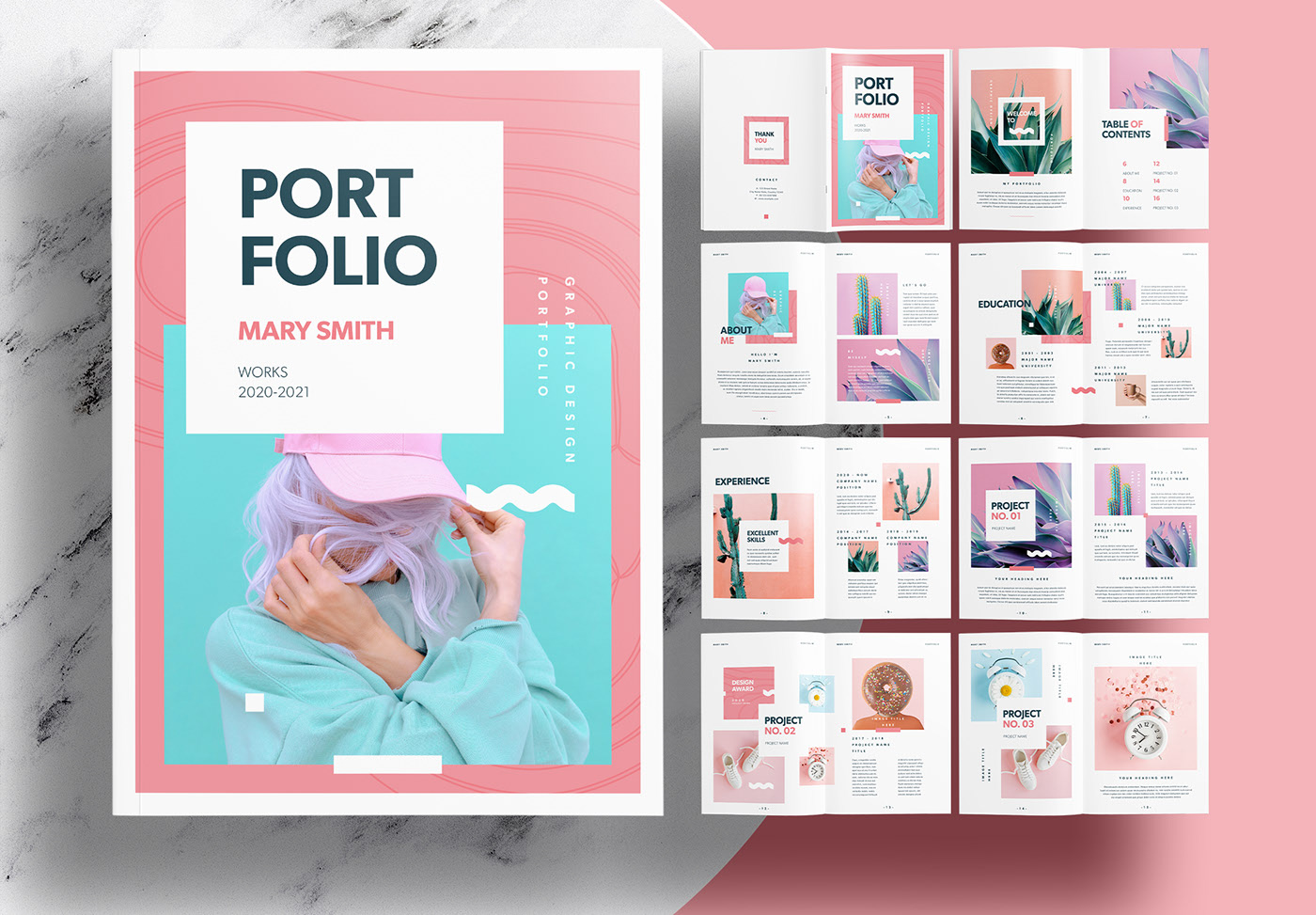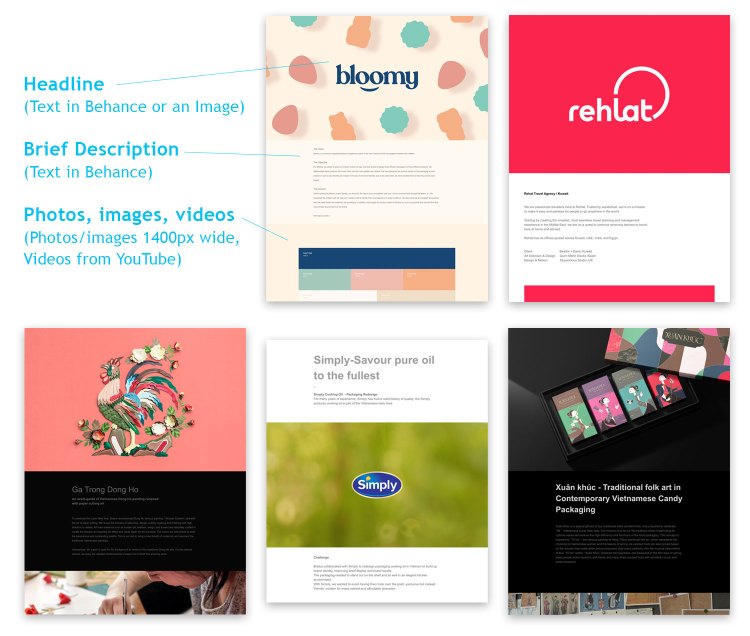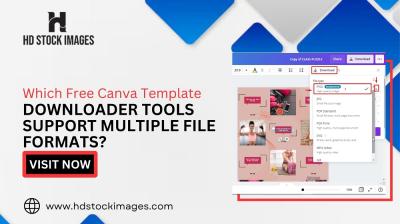Creating a standout portfolio on Behance is essential for showcasing your creative work. With millions of users, it’s important to design a portfolio that not only reflects your unique style but also captures the attention of potential clients and collaborators. In this guide, we’ll explore best practices for organizing your creative projects effectively, ensuring your portfolio tells a compelling story. From selecting your best work to creating an engaging layout, let’s dive into the essentials of Behance portfolio design!
Understanding Your Audience

Before you start designing your portfolio, it’s crucial to understand who will be viewing it. Consider the following points:
- Potential Clients: Are you looking to attract freelance work? Showcase projects that align with the kind of clients you want to work with.
- Employers: If you’re seeking a job, highlight work that demonstrates your skills and aligns with the industry standards of companies you’re interested in.
- Creative Peers: Sharing your work with fellow creatives can lead to collaborations and networking opportunities. Include projects that resonate with others in your field.
To further tailor your portfolio, consider these factors:
- Demographics: Are they young startups, established companies, or art enthusiasts? Adjust your tone and project selection accordingly.
- Interests: What kind of projects do they usually seek? Research current trends in your industry and adapt your work to showcase relevant skills.
- Feedback: Don’t shy away from reaching out to peers for insights on what works and what doesn’t. Their perspective can be invaluable.
By understanding your audience, you can curate your portfolio in a way that speaks to them directly, increasing your chances of making meaningful connections in the creative community.
Curl error: Operation timed out after 50001 milliseconds with 0 bytes received
Also Read This: How to Use Behance Search to Discover the Best Creative Work
Choosing the Right Projects to Showcase

When it comes to designing a portfolio on Behance, selecting the right projects is crucial. You want to highlight work that not only showcases your skills but also resonates with your target audience. Here are some tips to help you make the best choices:
- Diversity in Skill Sets: Include a range of projects that demonstrate different skills. For example, if you’re a graphic designer, showcase branding work, packaging design, and digital illustrations.
- Quality Over Quantity: It’s better to present a few outstanding projects than to overwhelm viewers with a long list of mediocre work. Aim for 5-10 well-executed pieces that you are proud of.
- Relevance to Your Goals: Tailor your project selection to align with the type of work you want to attract. If you’re aiming for a job in UX design, prioritize projects that reflect your experience in that area.
- Personal Projects: Don’t shy away from including personal projects. They can show your passion and creativity. For example, a personal branding project can highlight your unique style and vision.
Remember, your portfolio is a reflection of your creative journey. Choose projects that tell your story and showcase your unique perspective.
Also Read This: How to Create a Portfolio on Behance for Maximum Impact
Creating a Cohesive Visual Style
A cohesive visual style is essential in making your Behance portfolio stand out. It helps to create a memorable brand identity and allows your work to be easily recognized. Here’s how to achieve that:
- Consistent Color Palette: Stick to a specific color scheme across your projects. For instance, if you love pastel colors, use them consistently to create a soft, inviting aesthetic.
- Unified Typography: Choose two or three fonts that resonate with your style and use them throughout your portfolio. This could mean pairing a clean sans-serif font with a playful script for headings.
- Similar Layouts: Maintain a consistent layout style—whether it’s grid, collage, or single images. A unified layout helps to create a seamless viewing experience.
- Use of Imagery: Ensure that your images maintain a similar look and feel. For example, if you use bright, vibrant photos for one project, try to keep that same energy throughout the rest.
By focusing on these elements, your portfolio will not only look polished but also reflect your artistic voice. Cohesion in your work will make it more appealing and professional to potential clients or employers.
Also Read This: Showcasing Dreamweaver Code on Behance to Share Your Web Development Skills
5. Organizing Projects for Maximum Impact
When it comes to showcasing your creative work on Behance, organization is key. You want potential clients or collaborators to view your portfolio and instantly understand your style and expertise. Here are some best practices to consider:
- Group by Theme: Organize your projects by themes or categories. For instance, if you’re a graphic designer, you might have separate sections for branding, illustration, and web design. This method helps viewers navigate through your work easily.
- Prioritize Quality Over Quantity: Instead of loading your portfolio with every piece you’ve ever created, select your best work. A few standout projects make a stronger impression than a large number of mediocre pieces.
- Highlight Your Process: Show potential clients how you think and work by including sketches, drafts, or the evolution of your projects. This not only demonstrates your creativity but also your problem-solving skills.
- Use Strong Cover Images: A captivating cover image can make or break a project’s first impression. Choose images that are visually striking and relevant to the work you’re presenting.
Remember, your portfolio is a reflection of your personal brand. Take the time to organize it thoughtfully, and you’ll create a space that maximizes impact!
Also Read This: Becoming a Contributor on Getty Images: A Guide to Selling Your Images
6. Utilizing Behance Features Effectively
Behance offers a plethora of features designed to enhance your portfolio and increase your visibility. Here’s how to make the most out of these tools:
- Project Tags: Use relevant tags for each project to improve searchability. Think about what keywords clients might use to find work like yours. Tags can range from specific skills to broader categories.
- Creative Fields: Make sure to select the appropriate creative fields when posting your projects. This helps attract the right audience and potential job opportunities.
- Interactive Features: Consider using Behance’s interactive capabilities, such as adding videos or animations. This not only showcases your work in a dynamic way but also keeps viewers engaged.
- Networking Opportunities: Don’t hesitate to connect with other creatives. Following, appreciating, and commenting on others’ work can lead to valuable collaborations and increased exposure for your own projects.
By effectively utilizing these Behance features, you'll ensure that your portfolio isn’t just a collection of works but an engaging experience that reflects your skills and creativity!
Also Read This: Effective Ways to Download Files and Projects from Behance
7. Promoting Your Portfolio
Creating an eye-catching portfolio on Behance is just the first step; the real magic happens when you get it in front of the right audience. Promoting your portfolio effectively can help you attract potential clients, collaborators, and even job offers. Here are some best practices to consider:
- Leverage Social Media: Share your Behance projects on platforms like Instagram, Twitter, and LinkedIn. Use relevant hashtags to reach a broader audience. For instance, if you’re a graphic designer, hashtags like
#GraphicDesignor#DesignInspirationcan connect you with like-minded individuals. - Network Within Behance: Engage with other creatives on the platform. Comment on their projects, appreciate their work, and ask for feedback on yours. Building these connections can lead to more visibility.
- Create Engaging Content: Consider writing articles or creating videos that showcase your process. Sharing insights into your creative journey can attract more viewers who are interested in your work.
- Participate in Challenges: Behance often hosts design challenges. Participating can not only help you gain exposure but also enhance your skills and creativity.
- Use Email Marketing: If you have a mailing list, don’t hesitate to share your Behance portfolio with your subscribers. A regular update can keep your audience engaged and informed about your latest projects.
Remember, promotion is an ongoing process. Keep engaging with your audience and updating your portfolio to maintain interest.
8. Conclusion and Next Steps
Now that you've learned how to design and promote your Behance portfolio, it's essential to take action. Your portfolio is a living document that should evolve with your creative journey. Here’s how to keep moving forward:
- Regular Updates: Make it a habit to add new projects regularly. Even if it’s a small update, it shows that you are active and evolving as a creative.
- Seek Feedback: Don’t hesitate to ask for critiques from peers or mentors. Constructive criticism can provide valuable insights that you might overlook.
- Expand Your Skills: Continuously learn new techniques or tools related to your field. Online platforms like Skillshare or Coursera offer courses that can help you stay ahead.
- Reflect on Your Style: Take time to analyze the projects that resonate with you and define your unique style. This reflection can help in better organizing and presenting your work.
- Set Goals: Decide what you want to achieve with your portfolio. Whether it’s landing freelance gigs or showcasing your work for a job application, having clear goals will guide your efforts.
In summary, designing a standout portfolio on Behance is just the beginning. With consistent promotion and continuous improvement, you can turn your portfolio into a powerful tool that showcases your creative talents to the world. So, roll up your sleeves and get to work!
 admin
admin








